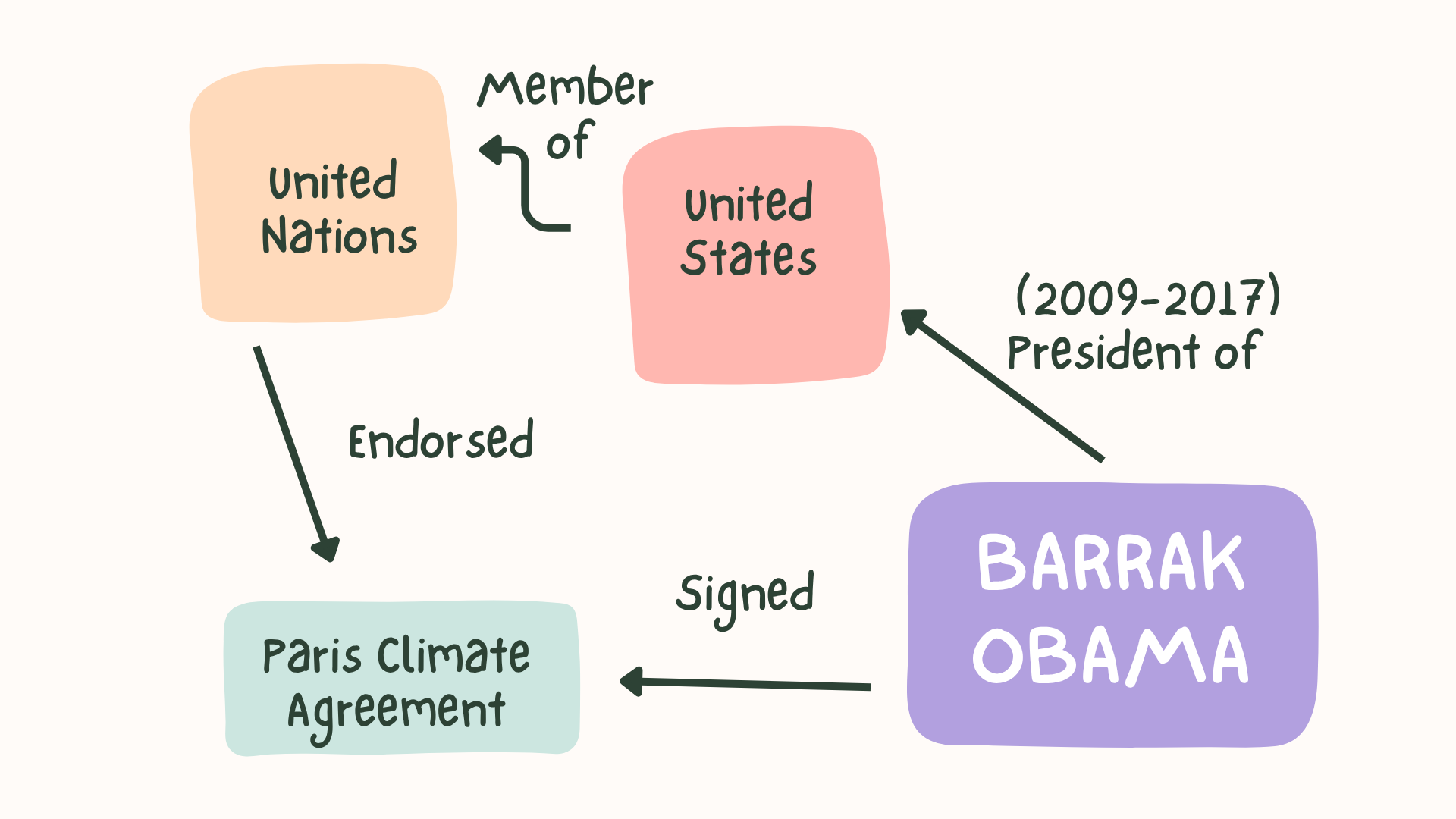“Data is not knowledge until it’s connected.”
If you’ve ever asked Google a question and been surprised by how accurate—and even insightful—the answer was, you’ve likely experienced the power of a knowledge graph. These digital “brains” are quietly becoming the backbone of how AI understands, reasons, and interacts with the world.
In this post, we’ll break down what knowledge graphs are, why they matter in AI, and how they’re already transforming industries—from healthcare to enterprise software.
What Is a Knowledge Graph?
Think of a knowledge graph as a giant mind map—but for machines. It connects pieces of information (called entities) and shows how they relate to each other through relationships.
For example:
“Barack Obama” — was president of → “United States”This simple link represents a fact. But imagine millions of these facts, all connected—that’s a knowledge graph. It transforms isolated data points into a web of meaning, enabling machines to “understand” the world more like we do.
How Knowledge Graphs Power AI
Knowledge graphs aren’t just databases. They’re dynamic frameworks that add context and reasoning capabilities to AI. Here’s how:
1. Understanding Language
They help AI systems make sense of natural language by grounding words in real-world concepts. So when you ask, “Who’s the CEO of Microsoft?” the AI doesn’t just look for keywords—it understands the roles, companies, and current leadership based on structured knowledge.
2. Inference and Reasoning
Knowledge graphs allow machines to connect the dots. If the graph knows that Alice is Bob’s mother and Bob is Charlie’s father, it can infer that Alice is Charlie’s grandmother—even if that specific fact was never explicitly stated.
3. Contextual Recommendations
Platforms like Netflix and Amazon use knowledge graphs to recommend content or products based on how items, genres, and user preferences are related.
4. Smarter Machine Learning
They enrich machine learning models with additional context, helping them learn faster, generalize better, and make more accurate predictions.
Real-World Example: Healthcare
In medicine, knowledge graphs connect symptoms, conditions, treatments, and clinical research. If a patient presents with symptoms A, B, and C, an AI system can trace those to potential diagnoses and relevant treatments—based on the interconnected medical knowledge in the graph.
During the COVID-19 pandemic, researchers used knowledge graphs to identify existing drugs that could be repurposed—by analyzing connections between known compounds, protein targets, and viral pathways.
Case Study: SAP’s Knowledge Graph Strategy
SAP, the global enterprise software giant, is using knowledge graphs to help businesses make smarter, faster decisions.
Here’s how:
- SAP Joule, its AI assistant, uses knowledge graphs to understand and respond to complex business questions.
- SAP Datasphere integrates knowledge graph capabilities to unify and contextualize data across platforms.
- SAP HANA Cloud includes a Knowledge Graph Engine that lets businesses model real-time relationships.
- SAP Signavio uses graphs to model and analyze business processes, revealing inefficiencies and dependencies.
SAP is also exploring how knowledge graphs can work with generative AI models to create business-relevant, explainable answers—something especially critical for enterprise decision-making.
Read more: How SAP Is Powering AI with Knowledge Graphs
The Future of Knowledge Graphs
We’re heading toward a future where AI doesn’t just answer questions—it understands why the question matters and how the answer fits into a broader context.
Knowledge graphs will be essential in building:
- Explainable AI, where systems can show how they arrived at a conclusion.
- Hybrid AI, combining large language models with structured, trusted data.
- Real-time decision engines, using continuously updating graphs from live data.
- Semantic Web 3.0, where the internet becomes more intelligent and meaningful.
What if your AI assistant could not only plan your travel but anticipate your schedule, your preferences, and your budget—because it understands the connections between all the data in your life? That’s the promise of a graph-powered future.
What’s Next in This Blog Series
Series Title: “Connecting the Dots: How Knowledge Graphs Are Reshaping Data, AI, and Industry”
This post is the first in a multi-part series exploring how knowledge graphs are transforming business, technology, and AI:
- What Is a Knowledge Graph? (You are here)
- How SAP Is Powering AI with Knowledge Graphs
- How Big Tech (Google, Microsoft, Amazon) Uses Knowledge Graphs
- Finance on Graphs: Risk, Fraud & Regulatory Insight
- The Future of Knowledge Graphs: From AI Agents to Web 3.0
- Getting Started: Tools, Platforms, and How to Build Your Own
